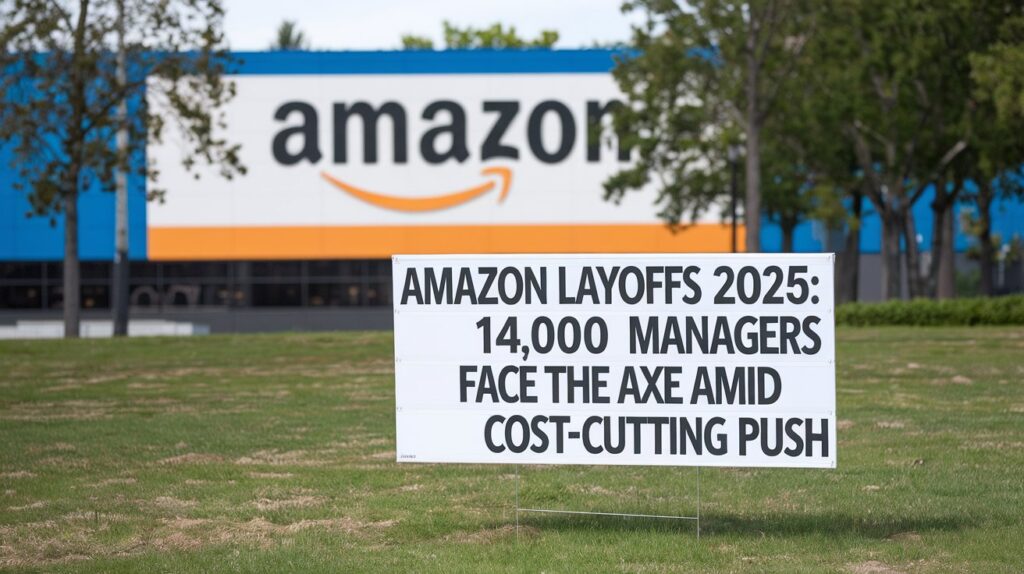The e-commerce giant Amazon is gearing up for a significant restructuring of its workforce, with plans to cut 14,000 managerial roles by early 2025. This move, reported across multiple news outlets on Tuesday, March 18, 2025, signals a major push towards cost efficiency and operational streamlining within the trillion-dollar company. The anticipated savings from this reduction in force are substantial, estimated to range between $2.1 billion and $3.6 billion annually.
This decision will result in a 13% decrease in Amazon’s global management workforce, bringing the total number of managers down from 105,770 to 91,936. While Amazon has yet to officially confirm these specific layoff figures, the reports indicate a strategic alignment with CEO Andy Jassy’s vision for a more agile and less bureaucratic organization.

The impetus behind these significant job cuts appears to be multifaceted. Primarily, it’s driven by a strong focus on cost reduction. In its broader efforts to bolster profitability, Amazon has also reportedly terminated several projects, including the “Try Before You Buy” apparel service and a swift brick-and-mortar delivery offering. These measures collectively demonstrate a company-wide initiative to economize and refine its business operations.
Furthermore, these layoffs are a part of a larger strategy to streamline operations and simplify the decision-making process within the company. According to a Business Insider report, CEO Andy Jassy aims to increase the ratio of individual contributors to managers by at least 15% by the first quarter of 2025. This shift is intended to cut down on bureaucracy and accelerate company processes. In line with this goal, Amazon has reportedly initiated a “bureaucracy tipline” for employees to report inefficiencies and has instructed managers to adopt measures that further streamline operations. Reducing layers in the corporate ladder is intended to “decrease bureaucracy” and increase speed within the company.
The need for such a significant restructuring can also be understood in the context of Amazon’s rapid workforce expansion during the pandemic. The surge in e-commerce demand led to a doubling of Amazon’s workforce from 798,000 in 2019 to over 1.6 million by the end of 2021. However, with the stabilization of the market post-pandemic, Amazon has reassessed its staffing requirements, leading to the elimination of 27,000 positions in 2022 and 2023. The planned reduction of 14,000 managerial roles in 2025 represents the next phase in Amazon’s ongoing efforts to adapt its workforce to changing business needs and market conditions.
Adding another layer to the narrative, one report suggests that Artificial Intelligence (AI) is likely to claim these 14,000 corporate jobs. This perspective indicates that the restructuring may not solely be about reducing management layers but also about leveraging technological advancements to optimize workflows and potentially automate certain managerial tasks.
A Morgan Stanley analysis has estimated that Amazon’s restructuring efforts could lead to the elimination of approximately 13,834 managerial positions by early next year, resulting in significant cost reductions. This strategic downsizing reflects Amazon’s commitment to refining its operational structure and improving its overall efficiency.
The announcement of these potential layoffs appears to have had an immediate impact on the company’s stock, with Amazon shares reportedly trading 1.28% lower ahead of Tuesday’s Wall Street Session. This market reaction underscores the significance of this restructuring and the investor sentiment surrounding Amazon’s strategic decisions.
In conclusion, Amazon’s planned reduction of 14,000 managerial roles by early 2025 marks a significant strategic shift for the company. Driven by the need for cost savings, operational efficiency, and adaptation to evolving market conditions, this move aligns with CEO Andy Jassy’s vision for a leaner and more agile organization. The potential influence of AI in reshaping the workforce adds another dimension to this restructuring. As Amazon navigates this period of significant change, the long-term impact on its organizational structure, profitability, and market position will be closely watched. This restructuring is a clear indication of Amazon’s proactive approach to optimizing its operations in a post-pandemic landscape.